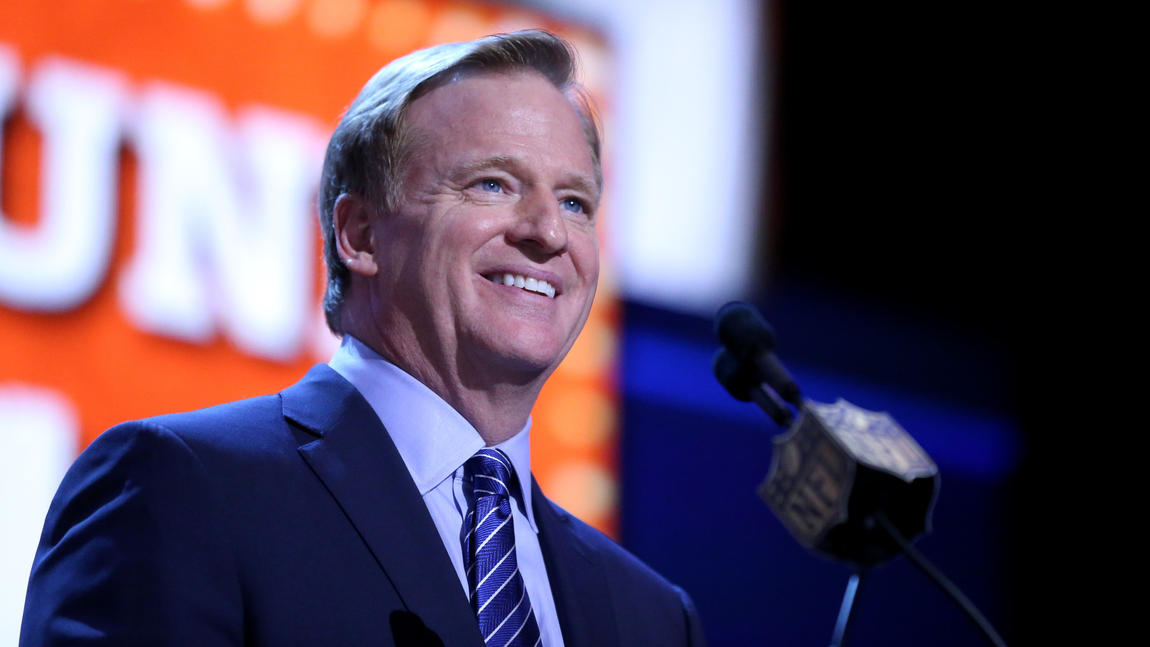
Tom Brady’s deflated balls continue to get most of the attention, but there were other — much more significant — developments at the owners meetings in San Francisco this week.
After experimenting with longer extra points in the preseason last year, the owners voted to implement longer extra points into the regular season this year. This is no longer an experiment. It’s an actual rule change. During the entire 2015 NFL season, extra points will be snapped from the 15-yard-line, making it a 32-yard attempt. In addition, the defense can return blocked kicks and turnovers for two points.
Why mess with the extra point? The NFL wants to make the play more exciting. But more specifically, they want to see teams go for two more.
That’s why I was a little surprised they didn’t go all-in and vote in another rule proposal, which would have moved the two-point conversion up to the 1-yard-line, instead of the 2-yard-line. For NFL kickers, 32-yard field goals are still pretty much automatic and I’m not convinced it’s going to result in more coaches going for two.
The numbers back this up. In a piece penned by Baltimore Ravens center John Urschel (who happens to also be a math wiz), he provides research from MIT that shows extra points from the two-yard line have a success rate of 98.1 percent. From the 15-yard line, that numbers drops to 92.8 percent, still a considerably high number.
Compare this to the success rate of two-point conversions, which, according to Football Outsiders, was 47.9 percent from 2000-2009.
Now, without getting too mathematical here (I hate math), Urschel’s piece shows that going for two actually leads to a higher expected points outcome (.958) than kicking an extra point from the 15-yard line (.928), which makes sense because a two-point conversion is obviously worth double the points.
The problem is, the two-point conversion is still a much more difficult play from the two-yard line than kicking an extra point from the 15-yard line and most coaches seek to eliminate risk. As Urschel puts it: “Coaches like low variation, and a difference of .03 expected points per extra point is not nearly enough to deter them from the safer choice of going with a slightly longer kick (which has variance of .07) as opposed to the much riskier two-point conversion (which has variance .25).”
Thus, if the NFL really wants to incentivize teams to go for two, the owners should have also voted to move the two-point conversion up to the one-yard line. That rule change, by the way, was proposed by the Philadelphia Eagles, which is not surprising considering Chip Kelly always looked for ways to go for two points when he was at Oregon.
My guess: we’ll see that rule change back on the table next year and it won’t be surprising to see the two-point conversion moved to the one-yard line in the near future.
Move To L.A. Inevitable
There’s going to be an NFL team in Los Angeles, probably by the 2016 season. The more relevant question now is: how many teams will be in Los Angeles?
The Chargers, Raiders and Rams have all staked out land in the L.A. area, with the Chargers and Raiders doing so together. To me, the Chargers make the most sense to move to Los Angeles as they have struggled with blackouts in the past and would be moving to a much bigger market, expanding their fan base, while keeping their existing fans close by.
The Rams make sense from a geographical standpoint as they are currently playing in the NFC West despite being over 1,400 miles away from their closest divisional opponent, the Arizona Cardinals.
Basically, this comes down to three teams trying to get new stadiums in their current cities (the Rams, by the way, apparently want a Soldier Field clone). Whichever team(s) fail in that effort will likely end up in L.A.
2016 NFL Draft Could Be Headed West Too
The NFL was thrilled with how Chicago hosted the draft. Mayor Rahm Emmanuel wants the draft back in Chicago and the NFL wants to be back.
But it might not be back next year.
The expectation in league circles is that if Los Angeles gets a team for 2016, next year’s NFL Draft will likely be held there too. If not, there’s a good chance it will return to Chicago. Either way, Chicago hasn’t hosted its last NFL Draft.
Soldier Field Gets Goal Line Cameras
The Bears released details on the new video boards going up at Soldier Field, saying that the two end zone video boards will be 128 feet by 40 feet and will have the highest picture quality in the NFL. They will be 310 percent larger than the old video boards.
Not getting as much attention, however, are 10 new cameras being installed at Soldier Field, including two 4K goal line cameras. This offseason, the Patriots proposed that goal line cameras be installed at every NFL stadium, but owners shot down the rule proposal, citing cost. But according to league sources, the issue is more about logistics. Every stadium is different, meaning standardizing the end zone angle (and guaranteeing that it won’t ever be blocked) would be nearly impossible. In some cases, seats might even have to be taken out, which would obviously be a concern to owners.
This doesn’t mean that goal line cameras won’t be a part of the game eventually (they probably will be), but the kinks need to be worked out first.
That’s why it’s significant that Soldier Field is getting two goal line cameras. At this point, it’s unclear if the cameras will be available for replay use right away, but at the very least, the NFL will be experimenting with them to see what kind of problems arise, if any.
Adam Hoge covers the Chicago Bears for WGN Radio and WGNRadio.com. He also co-hosts The Beat, weekends on 720 WGN. Follow him on Twitter at @AdamHoge.














